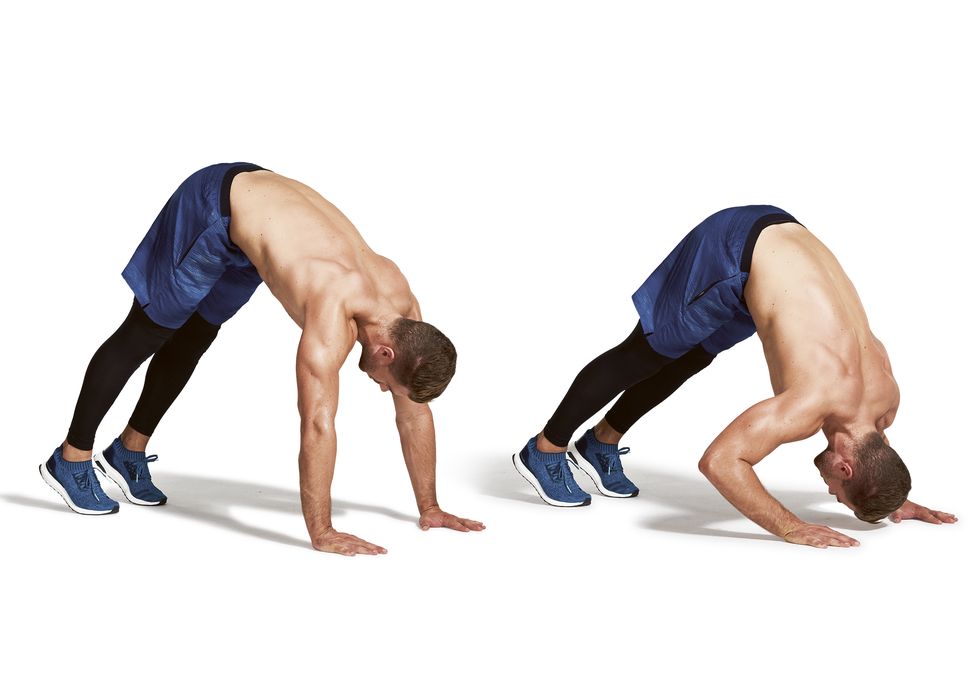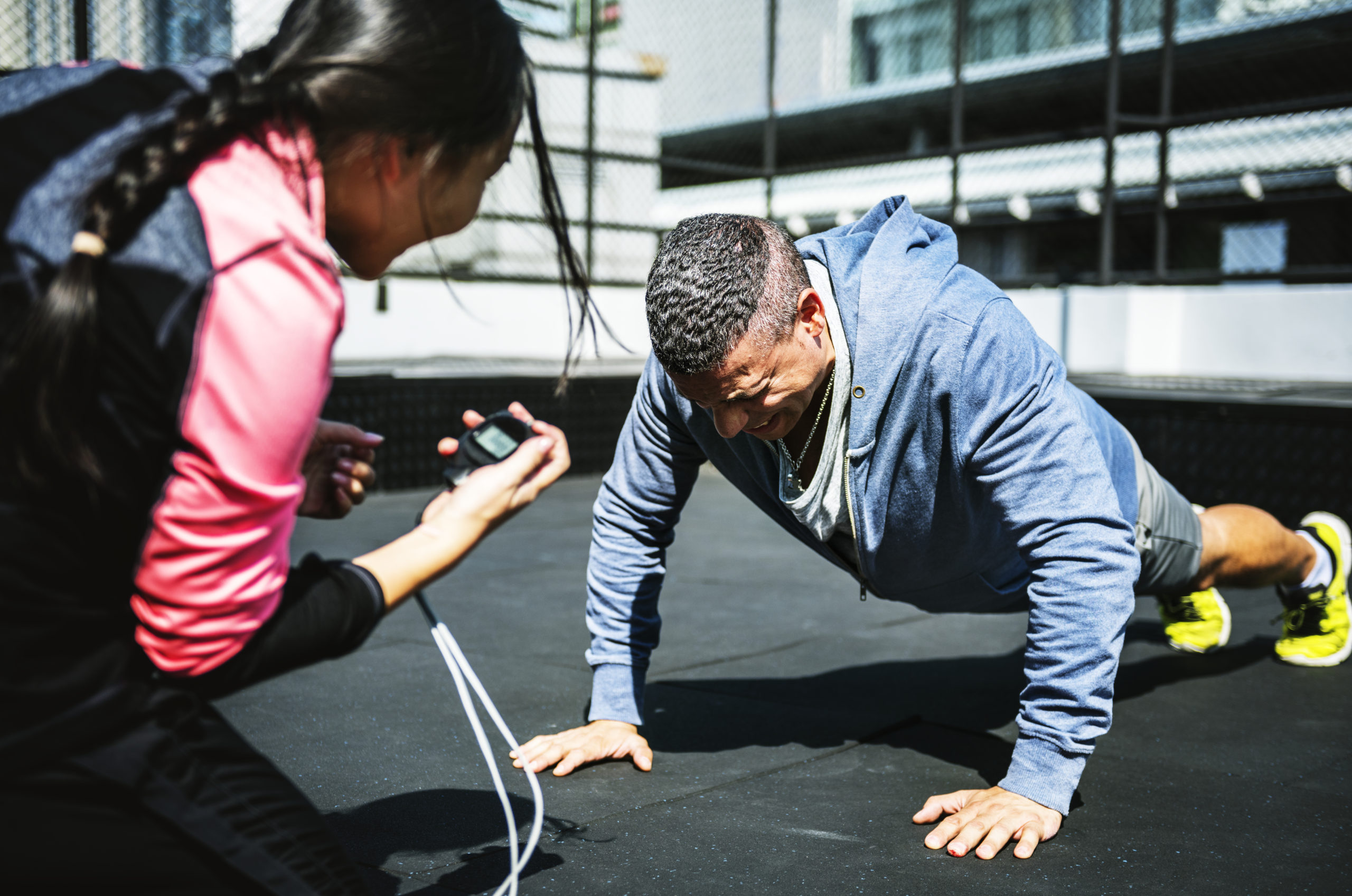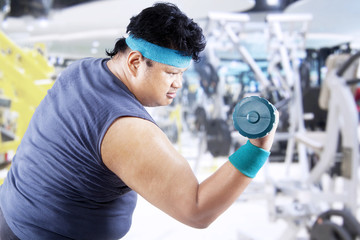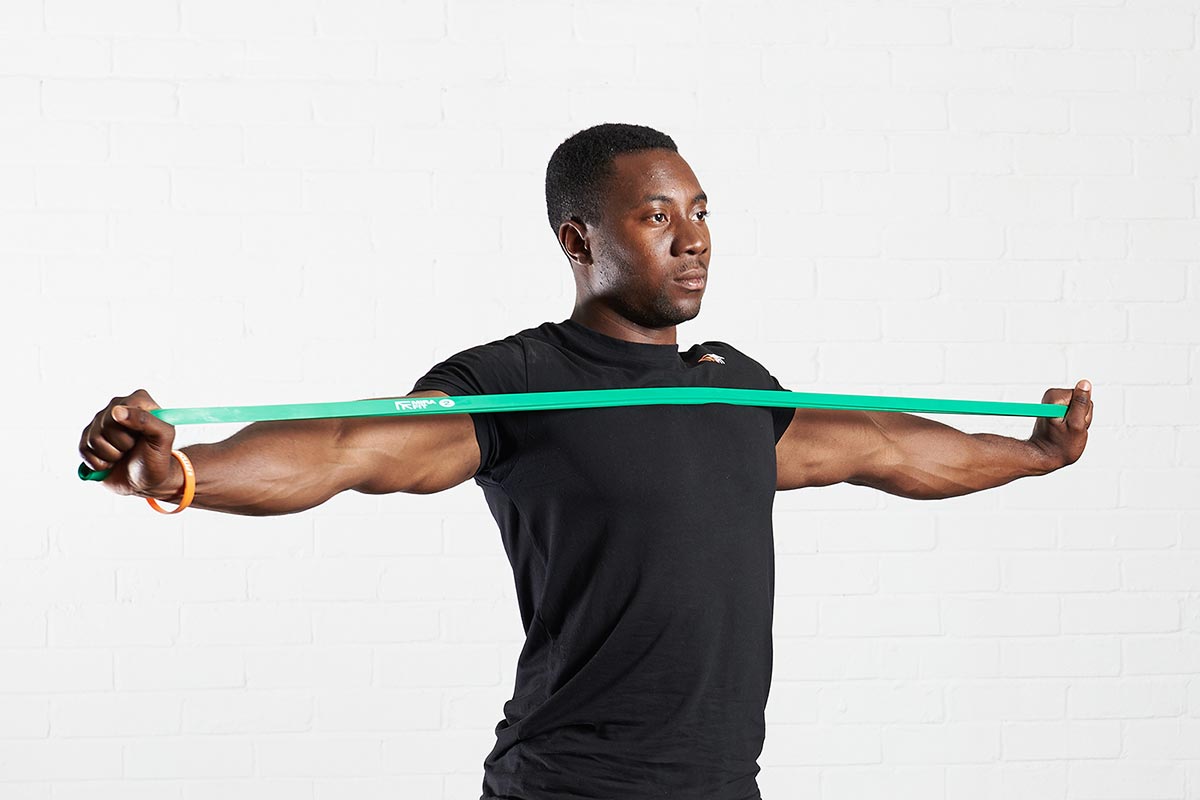
How to Use Resistance Bands for Exercising
Working out can get boring if you repeat the same routine time after time. It’s important to have different options to keep you interested. In this article, we will review how to use resistance bands for exercising in addition and their benefits.
A resistance band workout can be the next step in your strength training journey, leading to more challenging workouts than with free weights.
The Sneaky Health Team has done the research, and the consensus among the fitness experts is that resistance bands are especially beneficial for people who are new to fitness. It allows you to add load in small increments as you gain strength and flexibility.
Benefits of Exercising with Resistance Bands
Resistance band workouts have two significant advantages:
- Resistance bands are not affected by gravity. Rather than being constant throughout, the load increases as you move through the full range of motion of the exercises.
A shoulder press with 20-pound free weights, for example, requires you to carry the same amount of weight throughout the move.
However, with a resistance band, you won’t be able to carry the maximum load until you’ve reached the full extension of the move. This helps beginners avoid excessive wear and tear on the joints.
- Resistance bands add variety to the workout allowing you to do more functional movements than with free weights.
For example, in a resistance band workout, a trainer may have you perform standing balance positions to help develop your core muscles. You won’t see anyone doing standing balance work in a free weights workout.
Band Sizes
The resistance band’s tension loads range from 10 to 50 pounds, usually in five-pound increments. To figure out how much is right for you, try one or two workouts and see how you feel. Then move up in resistance or down from there.
After the workout, you should feel a moderate amount of soreness, but if you’re so sore that you can’t do your daily activities, you’ve been working out with too much load.
On the other hand, you didn’t use enough load if you’re not sore at all after your workout. You should always feel a little discomfort after a workout. That’s normal and a good sign that you’ve stressed your muscles and joints.
Resistance Bands for Exercising: The workout
With a combination of upper- and lower-body moves, this workout targets the posterior chain: The back, shoulders, middle back, glutes, and hamstrings. Your resistance bands may be narrow straps with handles attached to the ends or wide straps with looped ends; either style can be used to perform these moves.
We recommend 10 to 15 Frankenstein walks (a waist-high straight leg extension before each step, with arms extended forward) or other light simple movements to get loose and warmed up.
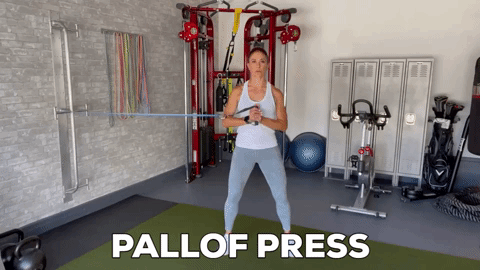
The Pallof press
Steps for pallof press:
- Place the band at a point parallel to your torso.
- Grasp the handles or the ends and bring your hands in front of your chest
- Take a step back so that the band is fully extended, and you can feel the tension.
- Then, rotate your body perpendicular to the anchor point.
- Continue to hold the ends or handles at your chest; the band will extend to the left or right, depending on which way you turn.
- Extend your arms forward, push the band away from your body, and pull it back toward you, keeping your hips and shoulders square (this move requires core stability because the band’s tension will tempt you to twist toward the anchor point).
Try pulling your stomach in for 5-second intervals as you extend your arms to add more stress to your core muscles.
The goal is to work your obliques and transverse abdominals by performing ten presses on each side.

Band Back Stretch
This is an excellent resistance band workout for back and shoulder muscles.
Steps for band back stretch:
- Hold the ends or handles of the band in each hand while standing tall or sitting with an erect posture.
- With your arms extended in front of you at shoulder height, stretch your arms wide
- Squeeze between your shoulder blades while stretching the band across your chest
- Release and repeat.
The goal is to work the muscles in your back, shoulders, and upper back with 15 to 20 repetitions.
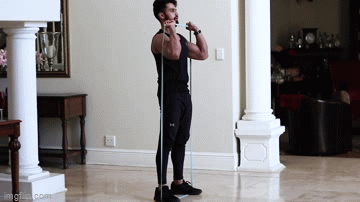
Front Squat
Steps for front squat:
- Place the band beneath your feet
- Hold the ends or handles in each hand
- Stand straight with your feet slightly wider than your hips
- As you bring your hands to your chest, pull the band. You are now in a ready state
- Drop your hips straight down, bringing your knees up to your toes ( You may be able to go further depending on your range of motion, but a good starting point is to drop until your hips are level with your knees).
- Then, push through your heels to get back to standing.
Do 15 to 20 repetitions to target your glutes and quads.
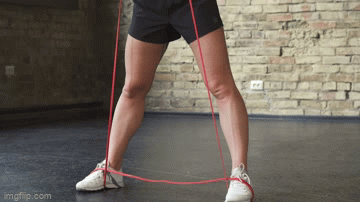
Upright Row
Steps for the upright row:
- Begin with the same foot position as the squat.
- Place the band under your feet.
- Hold the ends or handles in front of your thighs ( If you want to increase the tension, grab the band further down).
- Pull your hands up the front of your body while standing tall, keeping your elbows pointed out
- When your hands have reached chest level, return them to your sides, keeping them as close to your body as possible as you return to the starting position.
Do 15 to 20 repetitions to target your back, shoulders, and upper back. This move will also strengthen your biceps.
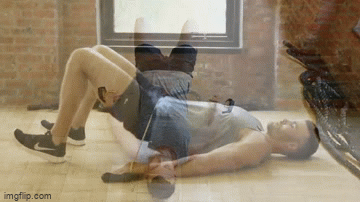
Glute and Hamstring Bridge
This is an excellent resistance band workout for butt, hamstrings, and ab muscles
Steps for glute and hamstring bridge:
- Lie on your back and bend your knees.
- Keep your feet flat on the floor.
- Holding the handles or ends at your sides, lay the band across your hips. (If you want to add tension, pull the band in further.)
- Lift your hips straight up by pushing through your heels. At the top of the lift, contract your glutes and then lower your hips back down.
Do 15 to 20 reps to target your glutes, hamstrings, and abdominals.
Conclusion
Resistance bands may not appear to be powerful training tools, especially to a complete beginner.
But don’t be fooled by their superficial appearance. These training tools aren’t just for people who want to get in shape or recover from an injury. They are also used by experienced weight lifters to develop chiseled muscles!
We strongly advise that you incorporate some of the exercises in this article into your resistance band workout routine. When done consistently, they can produce significant results in a shorter period of time.
Furthermore, you will be working the same muscles with resistance bands as you would with other traditional exercises, but without the added risk of injury.
Lastly, using resistance bands for exercising can provide the variety you need to keep you mentally motivated to achieve your fitness goals.
